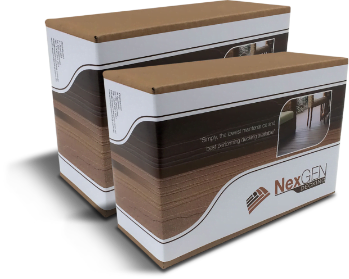Any able-bodied person with a hammer and power drill can build themselves a deck. Of course, choosing the type and style of your deck can really influence the challenge of your project, on many levels. A traditional Australian deck must be attached to your house, anchored to the ground, and built with a railing to be safe. Because of this, you need a lot of permitting and tons of planning to build the deck securely and properly. But there’s another, interesting alternative. You could build a floating deck instead.
What is a Floating Deck?
A floating deck is a deck built on a gravel bed and/or concrete blocks instead of attached to the house. It is a simple, flat deck that is neither anchored to the house or the ground. Floating decks are also rarely higher than two feet off the ground, which means that they do not require railings to be considered safe. Building a floating deck is as simple as preparing flat ground, laying a subframe, and then attaching deck boards. Anyone who can wield a hammer and place a board can make one, and it’s a great starter carpentry project that will improve your home at the same time.
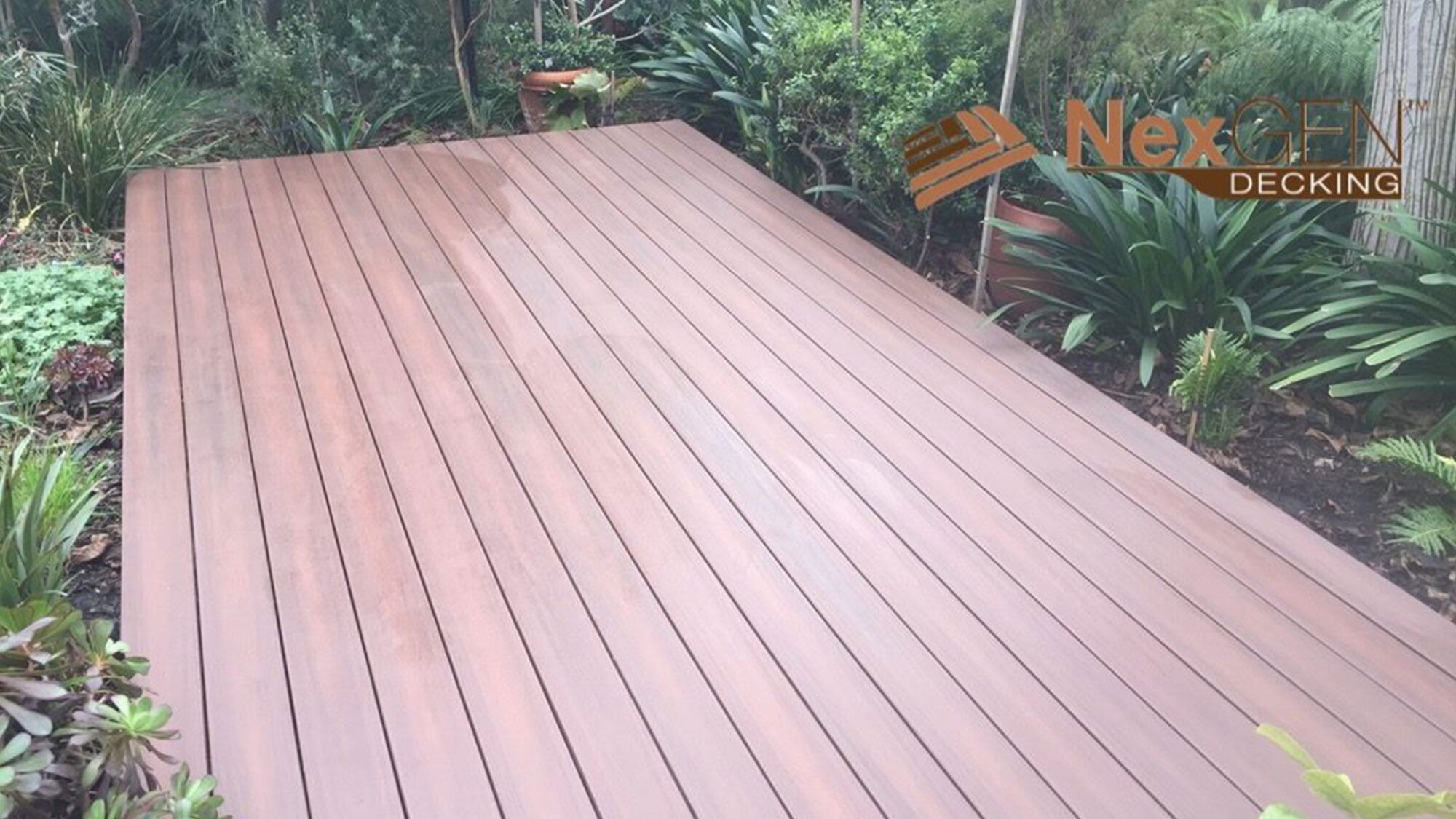

Why it “Floats”
The floating deck “floats” because unlike a normal deck, it’s not attached to the house or anchored by posts in the ground. Some floating decks do have beams or poles that are sunk into concrete in the ground to keep them from migrating, but the deck is not required to be anchored and by a rule is not bolted to the house. Therefore, the deck is technically mobile and “floats” along the top of the ground. Realistically, a floating deck sits on concrete blocks, but it could be picked up and moved by a strong team.
You (Usually) Don’t Need a Permit to Build One
One of the great things about building a floating deck is that you usually don’t need any kind of building permit. A traditional deck is considered a modification of the house. It is also considered a raised platform that is potentially a fall hazard. This is why traditional decks need approval from the local authorities to attain building permits.
A floating deck usually doesn’t need building permits because it does not attach to the house or property. You may still want to run the project by your neighbourhood council and check the local laws, but floating decks typically require far less paperwork for Australian homeowners and DIY builders.
Use our composite decking price calculator to estimate your project costs.
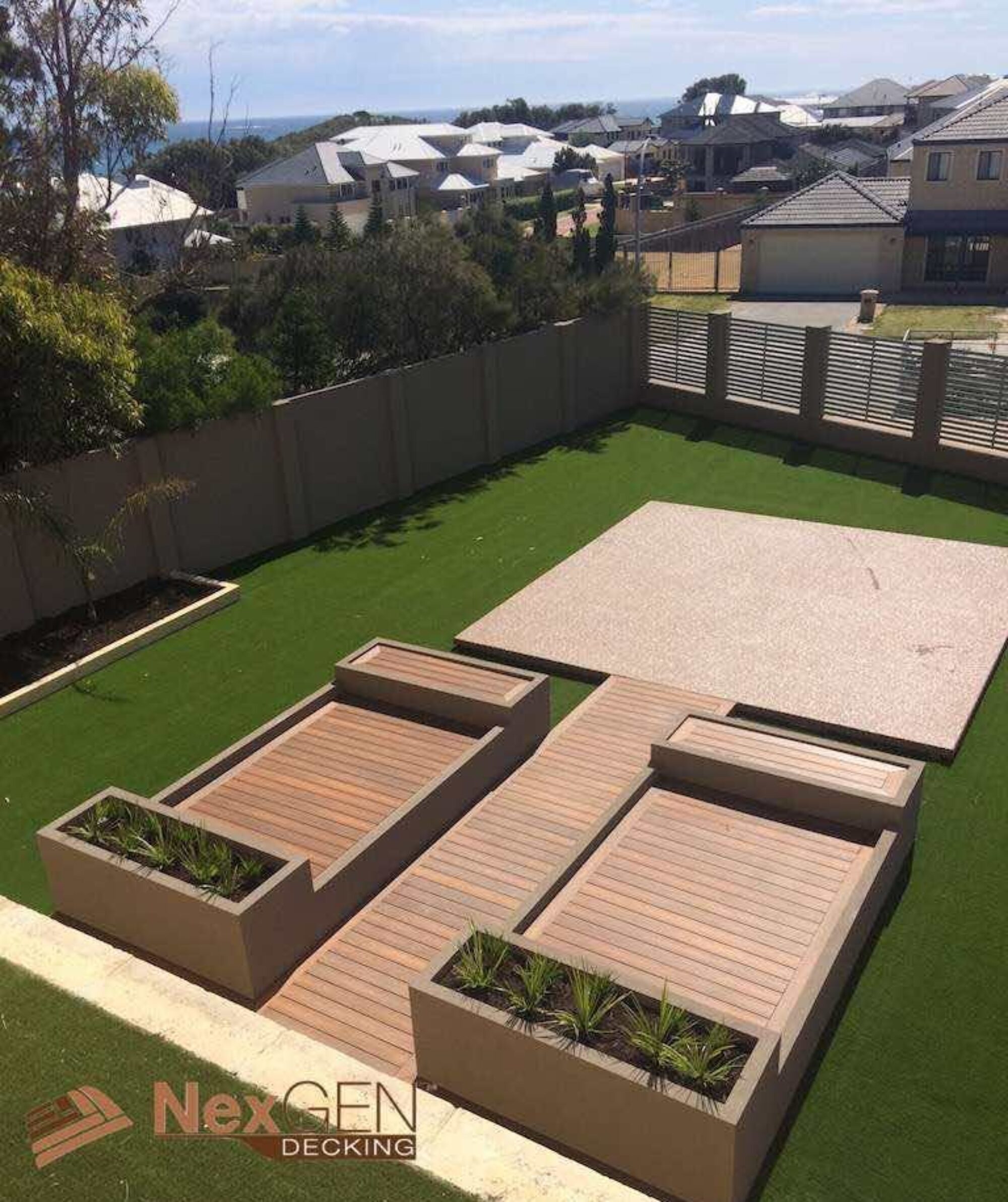
Layers of a Floating Deck
The most important thing to understand about a floating deck are three layers.
- Ground/Foundation
- Subframe
- Deck Boards
That’s it. While a traditional deck includes railing, posts, and anchoring points, a floating deck is just a framed set of deck boards that is enjoyable to walk on outdoors.
The ground layer needs to start with packed and level dirt. Sand can work equally well as a starting base. From there, ideally, you will add a weed cloth followed by a layer of gravel. Finish with large concrete blocks which will become the base of the structure.
The subframe layer is what you will lay the deck boards on. It needs to be the right size, rigid, and ready to receive deck screws, that’s all. Most people build their subframes out of a long grid of 2×4 boards.
The deck board layer is your finishing layer. The deck boards need to secure firmly to the subframe at both ends and sometimes in the middle of each board.
Floating Decks are Simple and Easy to Install
If you’re thinking about tackling a deck-building project, floating decks are incredibly easy to install. No need to worry about finding the studs in your external walls, drilling through siding, or pouring concrete into a post-hole. Building a floating deck consists of preparing the ground, building the subframe, and laying the deck boards. That’s it. If you fully understand all three stages, then a floating deck is only a day or two of labour away. Compared to the effort of building all the elements of a traditional deck, a floating deck takes a fraction of the time and labour – regardless of whether you use timber or composite deck materials.
Building With a Deck Cell Sub-Frame
Of course, one thing that makes a floating deck even easier to build is to skip building the subframe. Deck Cell is an innovative honeycombed black polymer grid designed specifically to replace the old wood subframe design. Deck Cell comes in large sizeable squares which can be laid on your floating deck foundation and locked together to form the subframe you need without days of carefully cutting, measuring, and securing wooden boards. And unlike a wooden subframe, a Deck Cell polymer subframe will never dry out, will never rot in the wet, and will never warp underneath your deck boards. The only extra tip for building with Deck Cell instead of building a subframe is to finish the outside of your deck with fascia to hide fasteners and the clever construction material underneath.
What Can You Do With a Floating Deck?
Now that you know so much about building a floating deck, it might be worth asking what you can do with it. A floating deck is more than just a wooden platform you can build in your backyard. It’s a stylish and versatile backyard platform. There are many different ways to put a floating deck to use, or build a custom floating deck to perfectly accent your back-garden design.
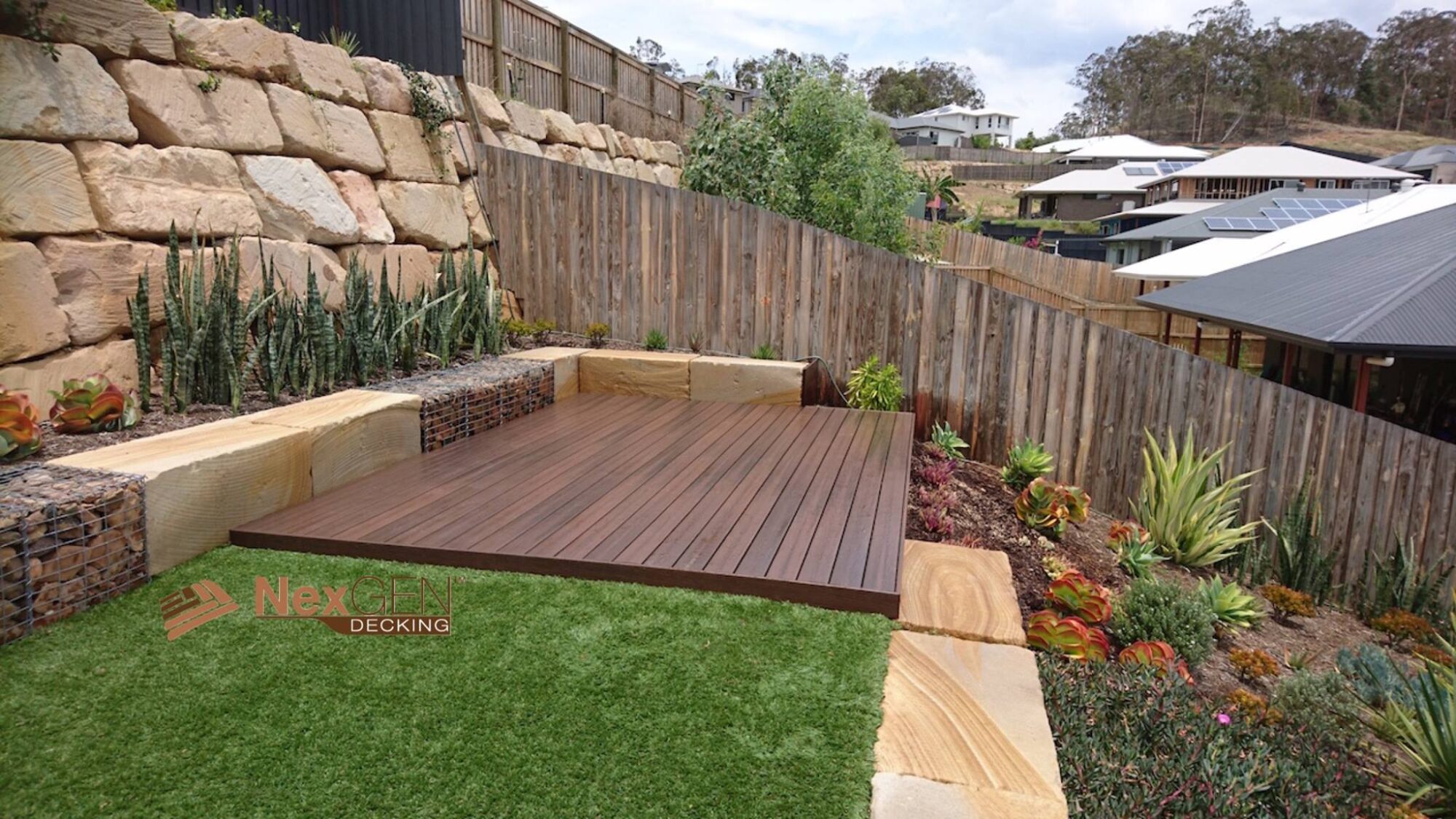
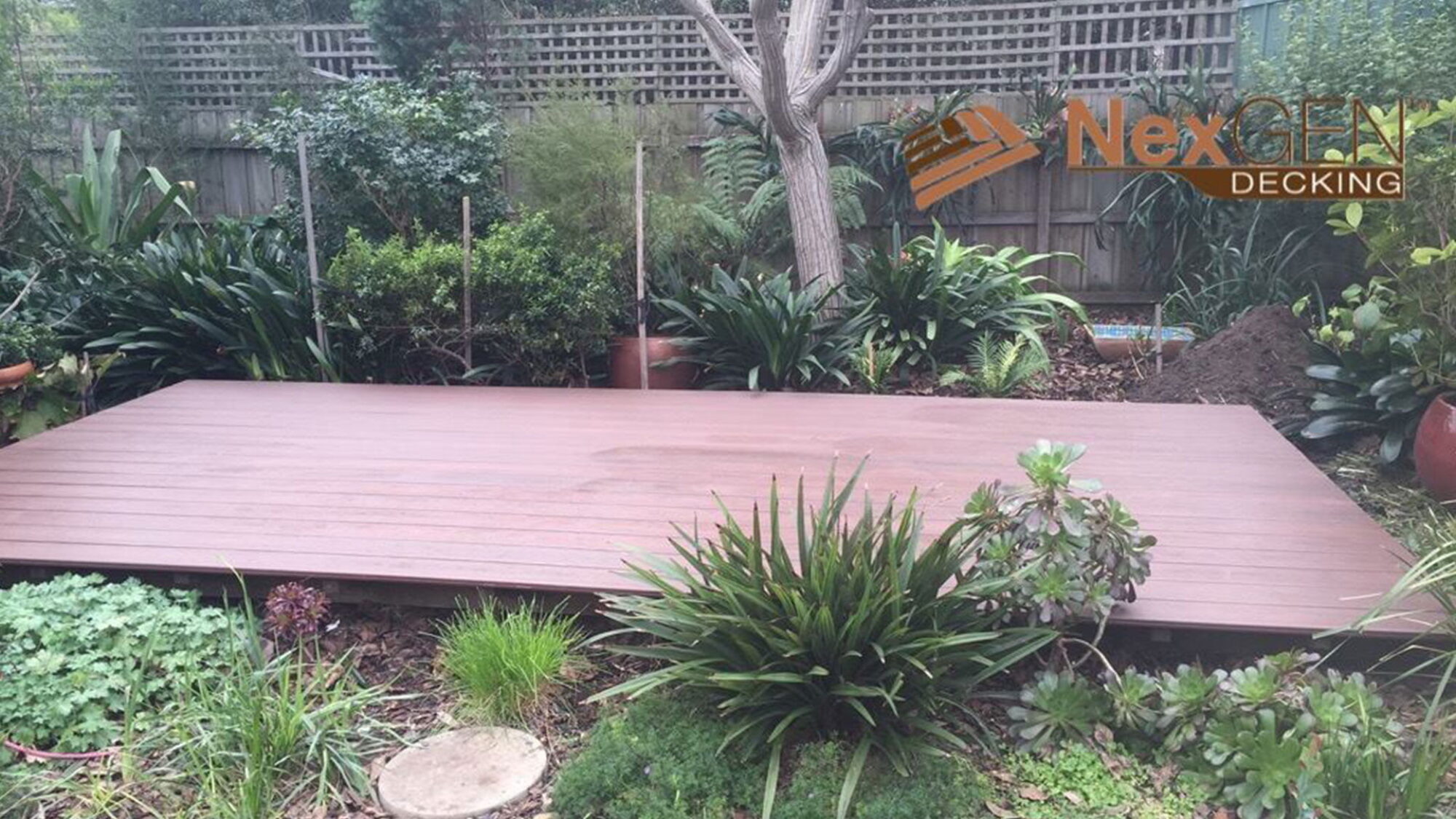
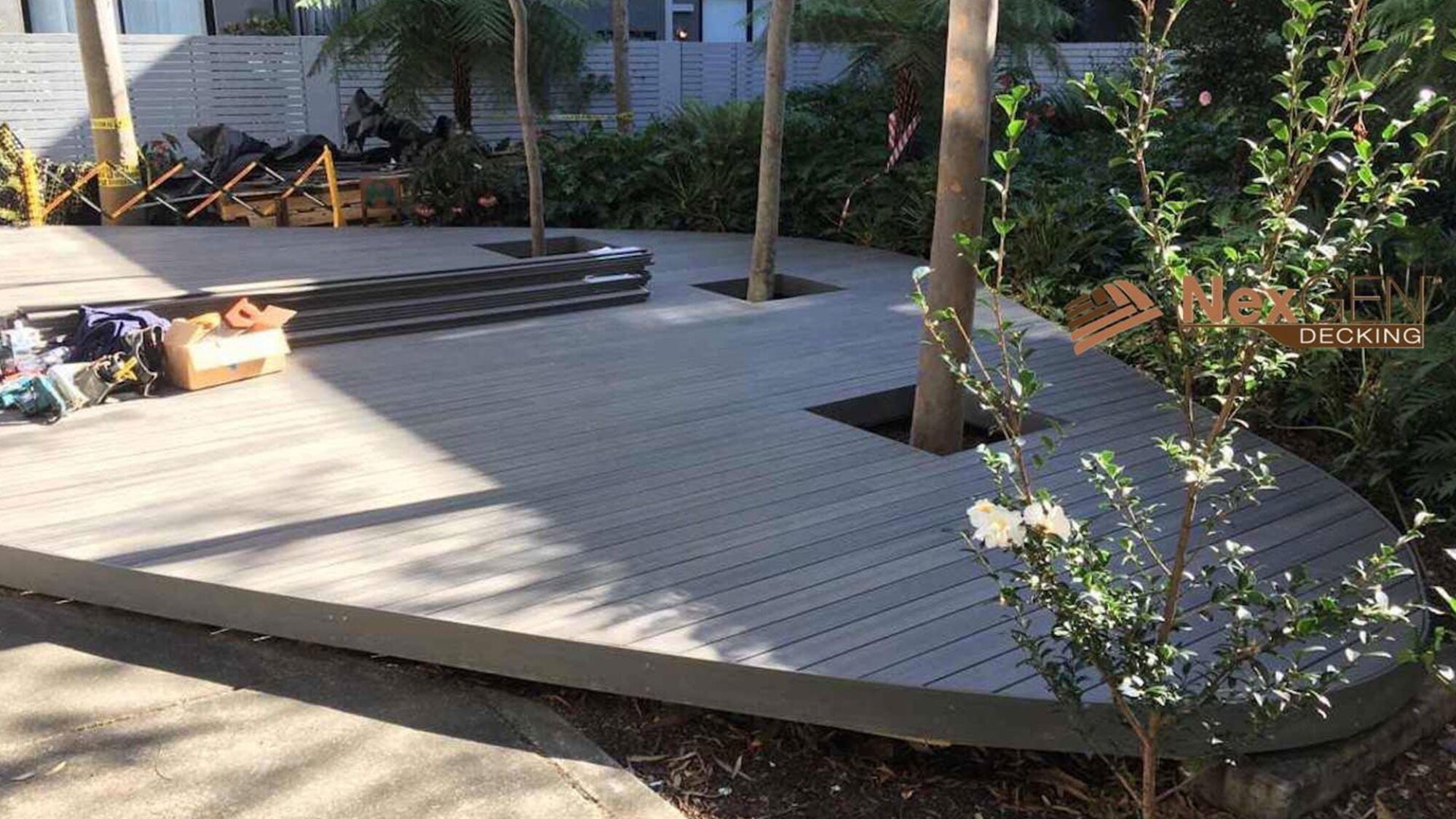
Back Patio
You don’t need a built-on deck to enjoy a back patio, or a deck instead of your current patio. If your home doesn’t have a back patio or you’d much rather have a deck than the patio you do have, then a floating deck is a great solution. Build yourself a warm, wood-toned addition to the home where you can place patio furniture and sip your tea in the morning without your slippers touching the ground.
DIY Verandah
Verandahs are a stylish addition to any home, typically defined as a covered deck or patio. Many homes would look even more beautiful with an additional verandah, but you don’t have to permanently alter the property to make yourself a lovely covered outdoor area. With a pavilion over a floating deck, you can make a beautiful DIY verandah for the family to enjoy.
Floating Boardwalks
Another great use for floating decks is to build yourself a floating boardwalk. A boardwalk, in this case, is a long deck that serves as a deck-board-footpath through your back garden. This could be a charming addition to your landscape and garden design, not to mention pleasing on the feet to venture into the yard barefoot.
Portable Yard Elements
Most importantly, remember that floating decks are actually portable. Once they are built, you can pick them up and put them on a new prepared foundation space anywhere else. This makes a floating deck incredibly versatile when it comes to putting your construction to use time and time again. A deck can be a show stage, a dance floor, a sunbathing deck, and so much more. You can even move it to become something new.
Anyone Can Build a Floating Deck
Can you build a floating deck for your home? Most likely, the answer is yes. Floating decks are easy to build, rarely require approval, and you can make the process even easier by using a synthetic subframe design instead of building the subframe out of wood. If you’d like to learn more about building a floating deck or would like to check out the Deck Cell subframe design, contact us today!
Products
Gallery
Contact
Direct Office Numbers
Adelaide – (08) 6316 0469
Brisbane – (07) 3041 6065
Melbourne – (03) 8672 6444
Sydney – (02) 8072 6220

